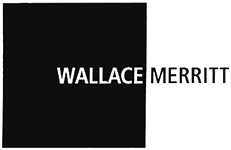Liasons
Arriving at my hotel for a brief stay in Paris, I noticed a plaque on the building next door indicating that William Faulkner had lived there in 1925. I then recalled his famous quote: The past is never dead. It’s not even past.
Taking a cue from Faulkner, I began to photograph my observations—both visually and narratively– on the similarities found in centuries-old buildings, contemporary landscapes, and public spaces. This is my attempt to capture and link the constant nature of design and creativity over time. It’s an effort to link the past with the present, to recognize the past in present forms.
Outcast
For his mourners will be outcast men,
And outcasts always mourn.
~Oscar Wilde
My source of inspiration for this series of photographs is Oscar Wilde’s The Ballad of Reading Gaol. Although this poem has as its central figure a prisoner who is condemned to hang, it chronicles Wilde’s experiences while he was imprisoned with two years of hard labor. Often quoted for its cynical approach to love—“Yet each man kills the thing he loves”–it is more a tribute to harsh prison conditions, unjust laws, and the responsibility of people who pass judgement.
Several of these themes often confronted me as I worked on this project. Our local paper was daily publishing articles about the Louisiana prison system with its inherent economical, political, and sociological consequences. And on the national level was a roaring debate about marriage equality. These issues, combined with Wilde’s mixture of reality, symbol and fantasy, emerged into Outcast.
Unguarded Remarks
I often photograph friends or acquaintances. There’s a personality trait or an emotional demeanor–or some undefined quality–that compels me to photograph them. The encounter is entirely intuitive and there is a give and take aspect between us. With this process we create roles that invite many narrative levels with undertones of meaning. The setting of a secluded courtyard, where I often find inspiration with my models, becomes a theatre for storytelling.
Histories
Family photographs have always intrigued me. As I stare at faces that are vaguely familiar, I hear voices amid laughter, recollect celebrations, traditions and family lore, rumors of scandals—tales that are intertwined with mine.
What happens family photos are not placed in their usual settings of albums and frames? When I set a snapshot of my uncle from WWI on top of a rock taken from a river fifty years later, I create a tale that connects my uncle and the rock. Lacking evidence of a direct relationship, I imagine the connection. I’m free to tell a tale that resonates with me and shapes new histories.
Moored
For anyone willing to listen, moored ships have a ready journey’s tale. As I stand on the dock and see masts, I hear the skilled hoisting of sails, the shouts of sailors’ orders, the shifting of cargo below deck, the loading of indigo on 17th century merchant ships. As I listen I return to the Saturday afternoon television of my youth, enthralled by pirates and swashbucklers, Douglas Fairbanks and Errol Flynn. I trace the voyages of Vikings, European explorers and Pacific islanders on old maps. I remember high school reading assignments: Billy Budd, Moby Dick, The Man Without a Country. I recall the horror of the Middle Passage.
Whether small sailing yachts or taIl ships, when moored to a dock they are a testament to maritime adventure. May we never lose the wonder of the sound of the words helm, quarterdeck, brig, and hoist the main sail. This series of photographs found its inspiration in a reality that triggered a memorial thrill.
